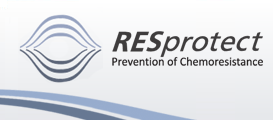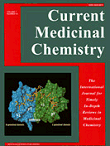| Anti-Cancer Therapeutic Approaches |

|

|

|
Anti-Cancer Therapeutic Approaches Based on Intracellular and Extracellular Heat Shock Proteins
INSERM UMR-866, Faculty of Medicine and Pharmacy, 7 Boulevard Jeanne d'Arc, 21049 Dijon, France. Source: Current Medicinal Chemistry, Volume 14, Number 27, November 2007 , pp. 2839-2847(9) Publisher: Bentham Science Publishers
Abstract:
Stress or heat shock proteins (Hsps) Hsp90, Hsp70 and Hsp27 are
chaperones that assist the proteins in their folding, stability,
assembly into multi-protein complexes and transport across cellular
membranes. The expression of some of them is highly induced in response
to a wide variety of physiological and environmental insults. Hsps have
a dual function depending on their intracellular or extracellular
location. Intracellular Hsps have a protective function. They allow the
cells to survive to lethal conditions. The cytoprotective functions of
Hsps can largely explain by their anti-apoptotic properties. Hsp90,
Hsp70 and Hsp27 can directly interact with different proteins of the
tightly regulated programmed cell death machinery and thereby block the
apoptotic process at distinct key points. In cancer cells, where the
expression of Hsp27, Hsp70 and/or Hsp90 is frequently abnormally high,
they participate in oncogenesis and in resistance to chemotherapy.
Therefore, the inhibition of Hsps has become an interesting strategy in
cancer therapy. In contrast to intracellular Hsps, extracellular
located or membrane-bound Hsps mediate immunological functions. They
can elicit an immune response modulated either by the adaptive or
innate immune system. In cancer, most immunotherapeutical approaches
based on extracellular Hsps exploit their carrier function for
immunogenic peptides. This review will discuss this different and often
paradoxical approaches in cancer therapy based on the dual role of
Hsps, protective/tumorigenic versus immunogenic.
|



 Authors: Didelot, Celine; Lanneau, David; Brunet, Mathilde; Joly, Anne-Laure; Thonel, Aurelie D.
Authors: Didelot, Celine; Lanneau, David; Brunet, Mathilde; Joly, Anne-Laure; Thonel, Aurelie D.